
George Washington Benson is an American jazz fusion guitarist, singer, and songwriter. He began his professional career at the age of 19 as a jazz guitarist.

Head Hunters is the twelfth studio album by American pianist, keyboardist and composer Herbie Hancock, released October 26, 1973, on Columbia Records. Recording sessions for the album took place in the evening at Wally Heider Studios and Different Fur Trading Co. in San Francisco, California.
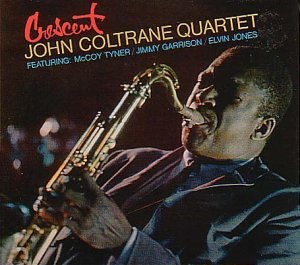
Crescent is a studio album by the jazz musician and composer John Coltrane. It was released in July 1964 through the label Impulse!. Alongside Coltrane on tenor saxophone, the album features McCoy Tyner (piano), Jimmy Garrison and Elvin Jones (drums) playing original Coltrane compositions.

Eugene McDuffy, known professionally as "Brother" Jack McDuff or "Captain" Jack McDuff, was an American jazz organist and organ trio bandleader. He was most prominent during the hard bop and soul jazz era of the 1960s, often performing with an organ trio. He is also credited with giving guitarist George Benson his first break.

Ronald Edward Cuber was an American jazz saxophonist. He also played in Latin, pop, rock, and blues sessions. In addition to his primary instrument, baritone sax, he played tenor sax, soprano sax, clarinet, and flute, the latter on an album by Eddie Palmieri as well as on his own recordings. As a leader, Cuber was known for hard bop and Latin jazz. As a side man, he had played with B. B. King, Paul Simon, and Eric Clapton. Cuber can be heard on Freeze Frame by the J. Geils Band, and one of his most spirited performances is on Dr. Lonnie Smith's 1970 Blue Note album Drives. He was also a member of the Saturday Night Live Band.

An organ trio is a form of jazz ensemble consisting of three musicians; a Hammond organ player, a drummer, and either a jazz guitarist or a saxophone player. In some cases the saxophonist will join a trio which consists of an organist, guitarist, and drummer, making it a quartet. Organ trios were a popular type of jazz ensemble for club and bar settings in the 1950s and 1960s, performing a blues-based style of jazz that incorporated elements of R&B. The organ trio format was characterized by long improvised solos and an exploration of different musical "moods".

Lonnie Smith, styled Dr. Lonnie Smith, was an American jazz Hammond B3 organist who was a member of the George Benson quartet in the 1960s. He recorded albums with saxophonist Lou Donaldson for Blue Note before being signed as a solo act. He owned the label Pilgrimage, and was named the year's best organist by the Jazz Journalists Association nine times.

Straight Life is a soul/funk influenced jazz album recorded in 1970 by trumpeter Freddie Hubbard. It was recorded on 16 November 1970 and released between the albums Red Clay (1970) and Sing Me a Song of Songmy (1971). This is also Hubbard's eighteenth overall album.

Taru is an album recorded by jazz trumpeter Lee Morgan, recorded in 1968, but not released on the Blue Note label until 1980. The album features performances by Morgan, Bennie Maupin, John Hicks, George Benson, Reggie Workman and Billy Higgins.
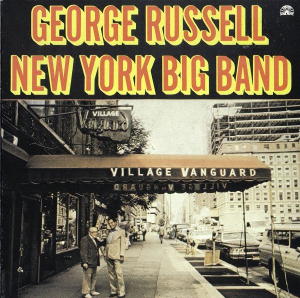
New York Big Band is a live album by George Russell released on the Italian Soul Note label in 1982, featuring performances by Russell with his New York Big Band recorded in 1978 and one track with The Swedish Radio Jazz Orchestra recorded in 1977 at the same concert that produced Vertical Form VI.
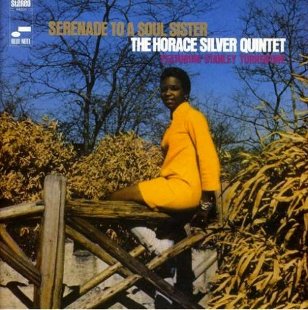
Serenade to a Soul Sister is an album by jazz pianist Horace Silver released on the Blue Note label in 1968, featuring performances by Silver with Charles Tolliver, Stanley Turrentine, Bennie Maupin, Bob Cranshaw, John Williams, Mickey Roker and Billy Cobham.

Midnight Creeper is an album by jazz saxophonist Lou Donaldson recorded for the Blue Note label in 1968 and featuring Donaldson with Blue Mitchell, Lonnie Smith, George Benson, and Leo Morris.

Sugar is an album by jazz tenor saxophonist Stanley Turrentine, his first recorded for the CTI Records label following his long association with Blue Note, featuring performances by Turrentine with trumpeter Freddie Hubbard, guitarist George Benson, bassist Ron Carter and drummer Billy Kaye. Pianist Lonnie Liston Smith is added on the title track, organist Butch Cornell and percussionist Pablo Landrum are on the other two tracks. The CD reissue added a live version of the title track recorded at the Hollywood Palladium in 1971 with flautist Hubert Laws, drummer Billy Cobham, percussionist Airto and keyboardist Johnny Smith.
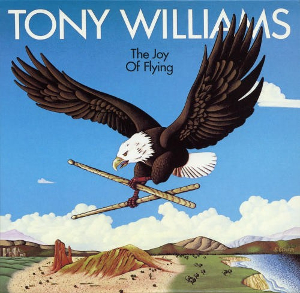
The Joy of Flying is a jazz fusion album by Tony Williams. It was recorded at the end of the Tony Williams Lifetime years, and is considered his first solo album since 1966. It included three duets, two with Mahavishnu Orchestra keyboardist Jan Hammer, and one with free jazz pianist Cecil Taylor, and three different quartets: the first featured Hammer along with guitarist George Benson and bassist Paul Jackson, the second featured pianist Herbie Hancock, bassist Stanley Clarke and Tom Scott on Lyricon, and the third featured guitarist Ronnie Montrose, keyboardist Brian Auger, and bass guitarist Mario Cipollina. "Hip Skip" also featured a five piece horn section.

The New Boss Guitar of George Benson is the debut studio album by American jazz/soul guitarist George Benson released on 1964 under Prestige Records.

Manhattan is an album by American flugelhornist Art Farmer featuring performances recorded in 1981 and released on the Soul Note label.

It's Uptown is the second studio album by jazz/soul guitarist George Benson.

Yes, Yes, Nonet is an album by the American jazz band Lee Konitz Nonet, recorded in 1979 and released on the Danish SteepleChase label.
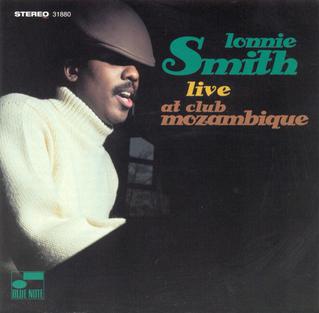
Live at Club Mozambique is a live album by American organist Lonnie Smith recorded in Detroit in 1970 and released on the Blue Note label in 1995.



















